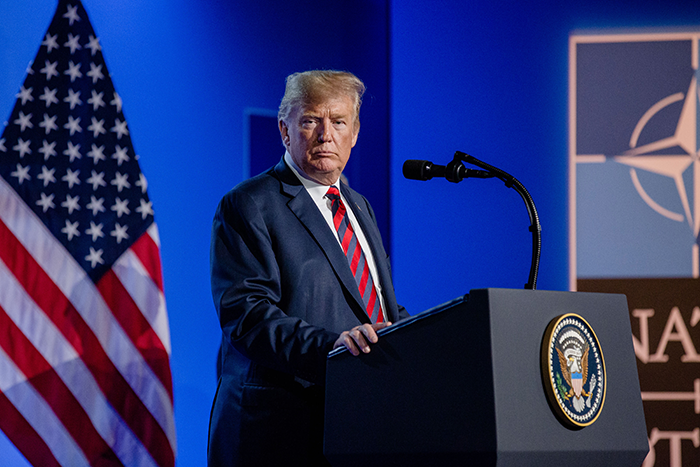Interviews / Europe, European Union, NATO
21 January 2025
Donald Trump’s Return to Washington: The Big Test for the European Defense Industry?

While NATO has been significantly strengthened by the war in Ukraine, Donald Trump’s return to power presents an unprecedented challenge for Euro-American defense cooperation. He is threatening Europeans with not guaranteeing their security if they do not contribute 5% of their GDP to the military sector and wants to increase their dependence on U.S. military equipment. Should we take U.S. threats seriously? To what extent will his economic reforms impact the European defense industry? Is a U.S. withdrawal from NATO expected? Interview with Jean-Pierre Maulny, Deputy Director of IRIS.
U.S. President Donald Trump was inaugurated at the White House on Monday, January 20, 2025. While the candidate had announced an increase in tariffs during his campaign, to what extent will Donald Trump’s rise to power impact the European defense industry?
Traditionally, there are no tariffs on defense equipment. The U.S. system is simpler. The Buy American Act allows the U.S. government to choose only American equipment if it wishes. As a result, less than 10% of U.S. defense equipment comes from other countries. Furthermore, to supply the U.S. military, weapons must be made in the United States.
In contrast, according to our latest data, 44% of the European armed forces’ equipment is American-made. It is clear how difficult it is for the French to get European partners to adopt the principle of a Buy European Act. There is clearly no reciprocity in this area.
While NATO defense ministers had agreed to dedicate at least 2% of their GDP to defense, what is the future of Euro-Atlantic defense relations, particularly within NATO?
During the last NATO summits in Vilnius in 2023 and Washington in 2024, the goal shifted from “2%” to “at least 2%”. Currently, 23 out of 32 NATO countries meet the 2% GDP defense target, compared to only three in 2014, when this goal was set at the NATO summit in Wales. Europeans are clearly doing more for their defense, especially since the start of the war in Ukraine. Their defense budgets have increased from 200 billion euros in 2021 to 300 billion euros in 2024. Investment spending, i.e., spending on ordering arms, has doubled, from 50 to 100 billion euros.
When Donald Trump says Europeans do nothing for their defense, that is false. It took the war in Ukraine to trigger this momentum, but it exists. Donald Trump wants Europeans to spend 5% of their GDP on defense. This would mean France’s defense budget reaching 125 billion euros, and its current public deficit of 6% would rise to 10%, while we need to stay under 3%. This is totally unrealistic. Even without the constraint of the 3% rule, a 5% defense budget would impoverish our country, reducing funding for healthcare, education, climate transition, and the reindustrialization of France with cutting-edge technologies.
If we do not meet the 5% target desired by Donald Trump, will he withdraw the United States from NATO and leave Europeans alone to face the Russian threat?
This is the message Trump will try to convey, but the reality is that he will never withdraw the United States from NATO. He will visit each country one by one and make the threat of either withdrawing from NATO, pulling U.S. troops from the country he is visiting, or threatening to remove the American security guarantee. Since no NATO country can currently meet the 5% target, he will offer the following deal: you buy American equipment, and “I’ll overlook” the 5% target. He will do this in bilateral meetings. This is what former Minister of Armed Forces Florence Parly called “Article F-35,” in reference to the U.S. fighter jet, not Article 5, the security assistance clause of the North Atlantic Treaty.
Therefore, Europeans must react together, not separately, and demonstrate that they are already doing much more for their defense, while American security interests, as well as commercial interests, are already preserved in reality. They will need to be firm: this will be a test of maturity for the European Union as an actor on the international stage.

